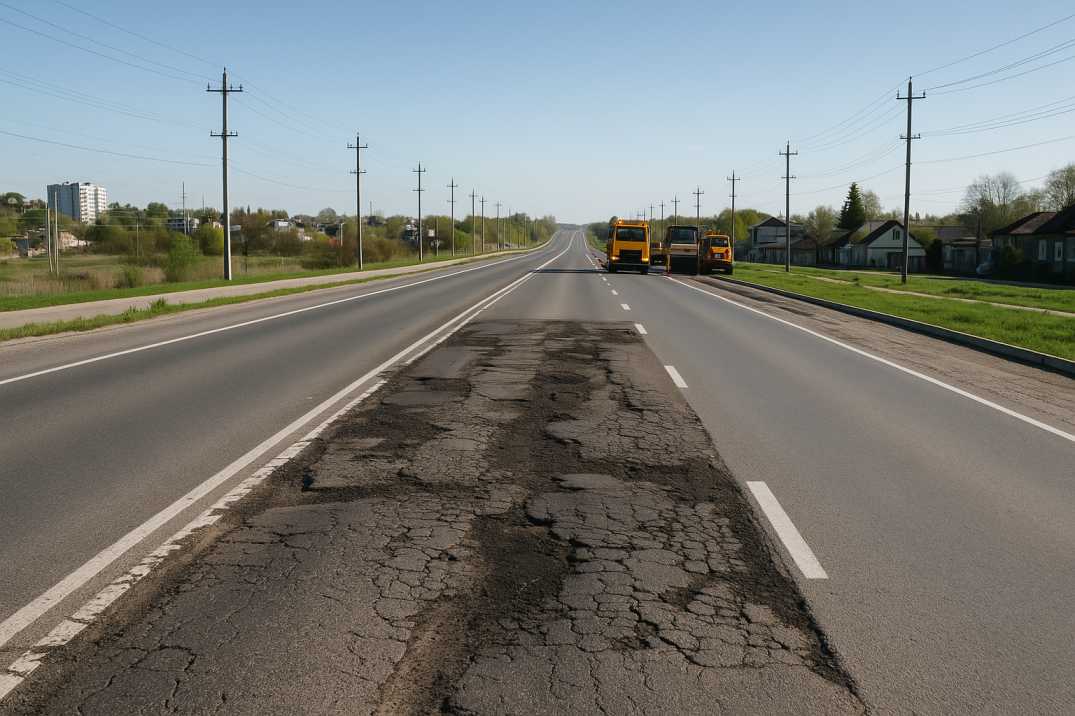Contact Us
RoadVision AI
Private Limited
Office No. 308 & 310, B Block
Ansal Chamber - 1, Bhikaji Cama Place,
Near Engineers India Limited (EIL) Bhawan, New Delhi - 110066
© 2024 | RoadVision AI | All rights reserved
Modern transportation networks are the lifelines of any nation’s economy and connectivity. As cities expand and highway infrastructure ages, maintaining roads has become more complex and cost-intensive. Traditional approaches are no longer sufficient to keep pace with rising traffic and climatic impacts. This is why AI road management solutions powered by remote sensing road surveys are transforming the way road asset management systems operate.
From smartphone-based road surveys to satellite monitoring and drone inspections, advanced technologies now allow agencies to automate data collection, reduce inspection costs, and take proactive maintenance decisions. In this blog, you will learn how remote sensing, automated road data capture, and AI pavement maintenance work together to create sustainable, safe, and efficient roads.

Road Asset Management Systems are frameworks that enable road authorities to inventory, monitor, and maintain all road infrastructure assets efficiently. They combine data on pavement condition, structural health, safety features, and usage trends to create a unified, actionable plan.
These systems rely on continuous digital road maintenance systems that collect and process enormous amounts of data. Historically, this data came from manual surveys and occasional visual inspections. Today, a combination of remote sensing road surveys, smartphone-based road surveys, and AI-powered analytics delivers a new level of accuracy and speed.
Remote sensing refers to gathering information about roads without direct contact. This can include:
Remote sensing road surveys provide consistent, objective, and large-scale data. When combined with AI road management platforms, they deliver powerful insights for:
You can explore these capabilities in detail on the Pavement Condition Survey page.
Raw images and sensor readings are only part of the story. AI pavement maintenance platforms analyze this data to:
By integrating automated road data capture and AI, agencies move from reactive maintenance to predictive planning, reducing lifecycle costs and improving road safety.
Learn more about this transformation in the Road Safety Audit section.
Smartphone-based road surveys are rapidly gaining popularity because of their affordability and scalability. Using apps installed on standard smartphones, road engineers can collect:
This app-based road survey approach ensures that even low-budget agencies can digitize their networks and feed data directly into their digital road maintenance systems.
These methods complement traditional surveys and remote sensing road surveys, creating a holistic, multi-source monitoring system.
Digital road maintenance systems powered by remote sensing and AI offer measurable benefits:
Satellites, drones, and smartphones ensure that even the most remote and rural roads are inspected regularly.
Automated workflows and image-based analysis reduce labor and equipment costs associated with conventional surveys.
AI removes subjectivity from inspections, delivering standardized outputs across regions and time periods.
Near-real-time data processing enables agencies to prioritize repairs before damage worsens, improving safety and reducing expenses.
Explore related applications at Road Inventory Inspection.
Several transport departments and private concessionaires have adopted AI road management platforms that integrate remote sensing road surveys. These programs have resulted in:
For detailed examples, check out these Case Studies.
While the benefits are clear, challenges remain:
Roadvision AI addresses these challenges by offering end-to-end support, cloud-based storage, and user-friendly dashboards that make adoption seamless.
Stay updated on new trends and solutions from our Blogs.
Over the next decade, expect a shift toward:
Agencies that invest today will see significant gains in efficiency, safety, and asset lifespan.
Remote sensing combined with AI road management is redefining how roads are monitored, maintained, and optimized. From smartphone-based road surveys to advanced digital road maintenance systems, the future is about data-driven, proactive management. Embracing these innovations is no longer optional; it is essential to create resilient, safe, and cost-effective transportation networks.
RoadVision AI is transforming road infrastructure development and maintenance with its innovative AI in road maintenance and AI in road construction solutions. By utilizing cutting-edge computer vision technology and digital twin models, the platform conducts comprehensive road safety audits, enabling the early detection of potholes, cracks, and other surface issues for timely repairs and enhanced road conditions. The use of AI in road safety also extends to traffic surveys, providing data-driven insights to tackle challenges like traffic congestion and optimize road usage. Focused on building smart roads, RoadVision AI ensures full compliance with IRC Codes, empowering engineers and stakeholders to reduce costs, minimize risks, and elevate road safety and transportation efficiency.
Ready to revolutionize your road asset management? Book a demo with us.
It is the collection of road condition and asset data using satellite, drone, and other non-contact technologies to create accurate, objective records.
AI analyzes remote sensing data to detect issues, predict failures, and optimize maintenance plans, reducing costs and improving safety.
Yes, in many cases, they can supplement or even replace manual surveys, especially for routine condition assessments and inventory updates.